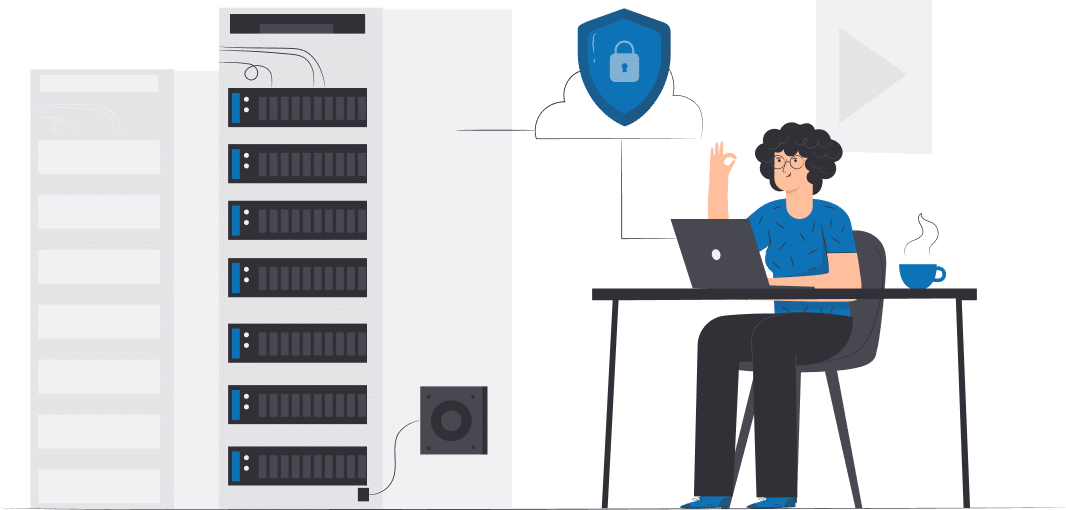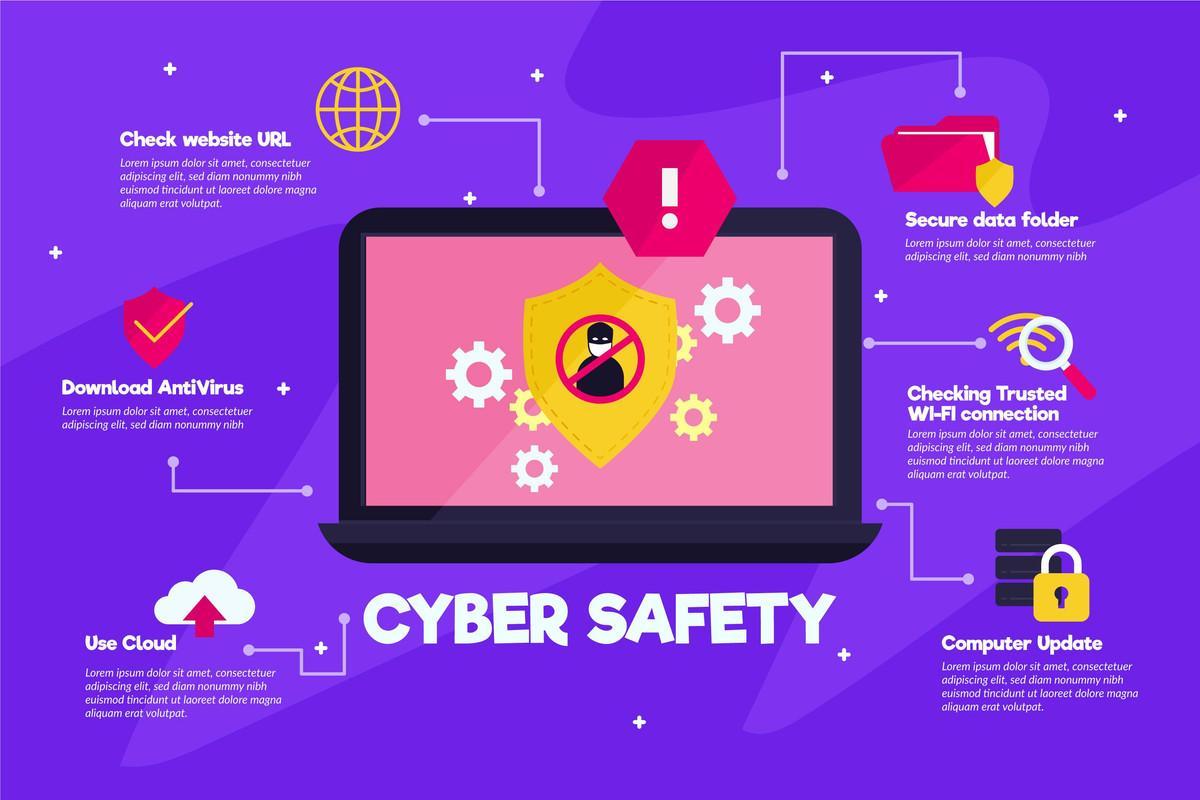Cybersecurity monitoring is essential for any business to protect its systems and data from cyber-attacks. It involves identifying and responding to threats and vulnerabilities, as well as taking preventive measures to mitigate the risks associated with those threats.
But to get the most out of cybersecurity monitoring, there are some things you can do in advance. These steps help to ensure that your networks and data are as secure as possible and add an extra layer of protection for your organization.
Therefore, in this article, we will discuss 10 steps to prepare for cyber security monitoring, so that your cyber services provider can hit the ground running.
What is Cybersecurity Monitoring?
Cybersecurity monitoring is the process of constantly collecting data and analyzing it for potential threats. It is used to detect and alert organizations to malicious activity or suspicious behavior on their networks, such as malware, unauthorized access attempts, or data breaches. By monitoring these activities, organizations can quickly detect and respond to any threats before they become a major problem.
The Different Types of Cybersecurity Monitoring
The most common types of cyber security monitoring include network monitoring, system monitoring, application monitoring, and user activity monitoring. Network monitoring focuses on the flow of data between networks, while system monitoring looks for changes in the system configuration or settings. Application monitoring is used to detect malicious code or vulnerabilities in applications, while user activity monitoring looks for suspicious user behavior.
The Benefits of Cybersecurity Monitoring
Cybersecurity monitoring offers many benefits to businesses and organizations. First, it helps protect against malicious attacks, such as data breaches, ransomware, and malware. By monitoring the network, systems, applications, and user activity, organizations can quickly detect and respond to any threats before they become a major problem.
Second, cyber security monitoring helps organizations stay compliant with industry regulations and standards. Third, it allows organizations to quickly identify and respond to potential security threats, which can help minimize the risk of data loss or downtime. Finally, it can help organizations improve their overall security posture by providing visibility into their networks, systems, and applications.
With all of that said, it’s important to prepare your networks in advance before hiring a cybersecurity monitoring service provide, so that they can do their job well and get started with protecting you from day one. Therefore, let’s go over the 10 main steps you should take to prepare for cybersecurity monitoring.
- Identifying Cyber Security Risks
The first step in preparing for cyber security monitoring is to identify any existing cyber security risks. This can be done by conducting a thorough assessment of the network and its components, as well as any external systems or services that are connected to it.
This assessment should include an analysis of the potential threats and vulnerabilities that exist, as well as the data, applications, and processes that are used. It’s important to identify any existing threats that could be exploited by cyber attackers, as well as any weaknesses that could be used to gain access to the network or exploit sensitive data.
Once the risks have been identified, it’s important to develop a plan of action to mitigate them. This could involve implementing security controls such as firewalls, antivirus software, and secure authentication systems. It’s also important to regularly review the security measures in place and update them as needed.
- Setting up a Cyber Security Monitoring System
The next step in preparing for cyber security monitoring is to set up a system to monitor for potential threats. This system should be configured to detect any malicious activity, such as suspicious logins, data exfiltration attempts, or attempts to access sensitive data. The system should also be able to detect any changes to the network, such as new software being installed or changes to configuration settings.
The system should be able to generate alerts when suspicious activities are detected, as well as provide detailed reports on any threats or vulnerabilities that were identified. It’s also important to ensure that the system is regularly monitored and updated to keep up with the latest threats. Of course, you can always hire a cybersecurity services provider to set this system up for you.
- Understanding Cyber Security Laws and Regulations
It’s also important to understand the laws and regulations regarding cybersecurity. Different countries and regions have different laws and regulations, so it’s important to ensure that your organization is compliant with the laws and regulations in your area. It’s also important to ensure that any third-party vendors or services that you use are compliant with the relevant laws and regulations.
Failing to comply with the applicable laws and regulations can lead to severe penalties, so it’s important to ensure that your organization is compliant with all the applicable laws and regulations.
- Creating a Cyber Security Policy
The next step in preparing for cyber security monitoring is to create a cyber security policy. This policy should clearly outline the security measures that should be taken to protect the network, as well as any procedures that should be followed in the event of a security breach. It’s important to make sure that all employees are aware of the policy and understand their roles and responsibilities in protecting the network. It’s also important to regularly review the policy and update it as needed.
- Developing Cyber Security Training and Awareness Programs
In addition to creating a cyber security policy, it’s important to develop training and awareness programs for employees. These programs should cover topics such as identifying potential threats, protecting sensitive data, and responding to security incidents. It’s also important to ensure that all employees understand the importance of cyber security and the role they play in protecting the network.
- Implementing Security Controls and Technologies
The next step in preparing for cyber security monitoring is to implement security controls and technologies. This could include firewalls, antivirus software, intrusion detection systems, and other security measures. It’s important to ensure that these security measures are regularly monitored and updated to keep up with the latest threats.
It’s also important to ensure that all devices and systems are kept up to date with the latest security patches and updates. This will help to ensure that any vulnerabilities are addressed promptly.
- Testing Cyber Security Monitoring Systems
Once the security controls and technologies have been implemented, it’s important to test the cyber security monitoring systems to ensure that they are functioning properly. This could involve running simulations to test the system’s response to various threats and vulnerabilities. It’s also important to regularly review the logs and reports generated by the system to ensure that any suspicious activity is identified and addressed promptly.
- Developing a Cyber Security Incident Response Plan
The next step in preparing for cyber security monitoring is to develop a cyber security incident response plan. This plan should outline the steps that should be taken in the event of a security incident, such as a data breach or malicious attack. It should also outline the roles and responsibilities of each team member, as well as the procedures for responding to the incident.
- Backing Up All Data to a Secure Third-Party Service
It’s also important to back up all data to a secure third-party service. This will ensure that any data that is lost or corrupted can be restored quickly and easily. It’s also important to ensure that the data is encrypted and stored in a secure location. In the event of a cyber-attack, it’s possible to lose all of your businesses data, not to mention the sensitive data of your customers. By having everything backed up, you’ll be able to restore your databases, which can minimize the damage to your business and reputation.
- Choosing the Best Cybersecurity Monitoring Company for Your Needs
The final step in preparing for cyber security monitoring is to choose the best cybersecurity monitoring company for your needs. This company should have experience in the industry and be able to provide the security measures and technologies that your organization needs. It’s also important to ensure that the company provides regular updates and maintenance for the system, as well as any additional services that may be required.
Conclusion
In conclusion, cyber security monitoring is essential for any business to protect its systems and data from malicious attacks. By following the 10 steps outlined in this blog, you can ensure that your organization is prepared for any potential threats. It’s also important to regularly review the security measures in place and update them as needed. By taking the necessary steps to protect your network and data, you can ensure that your organization is secure and protected.
If you are ready to get started with cybersecurity monitoring, then be sure to look into BlueSteel Cybersecurity. BlueSteel is an industry leader, and they have a great reputation for providing comprehensive cybersecurity monitoring services and cyber security consulting services. To learn more or get started, contact BlueSteel Cybersecurity today.







